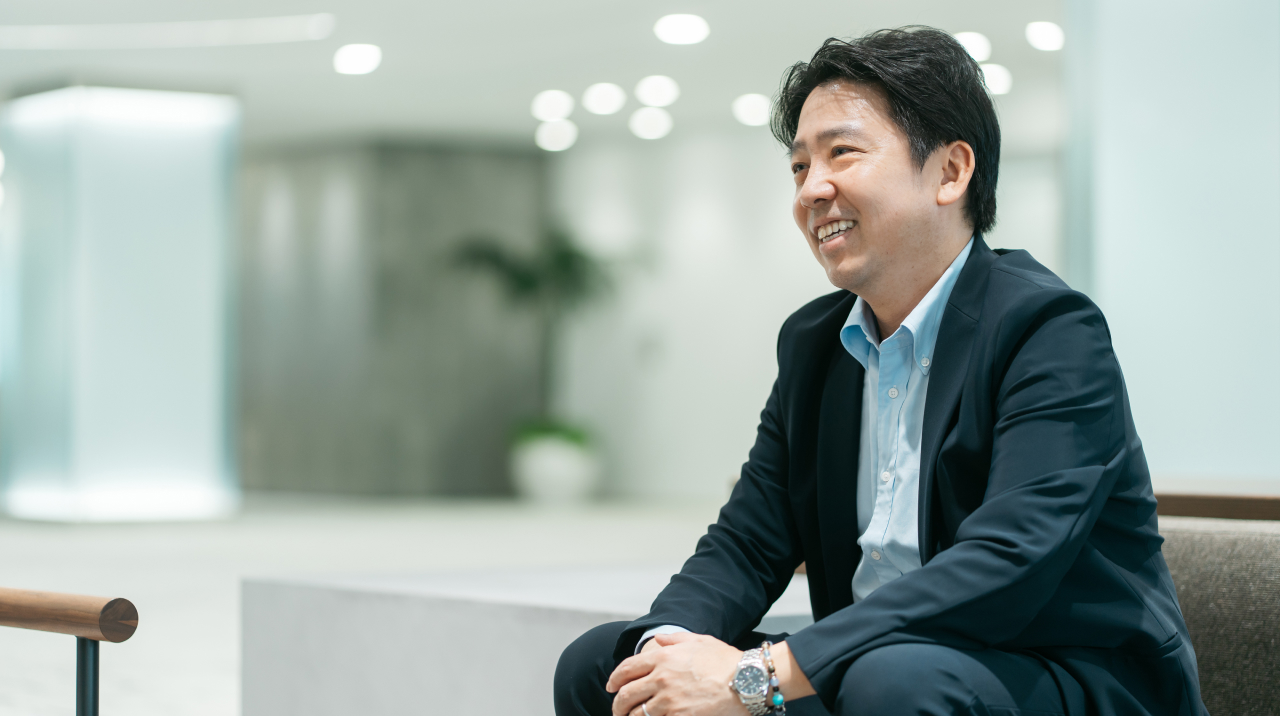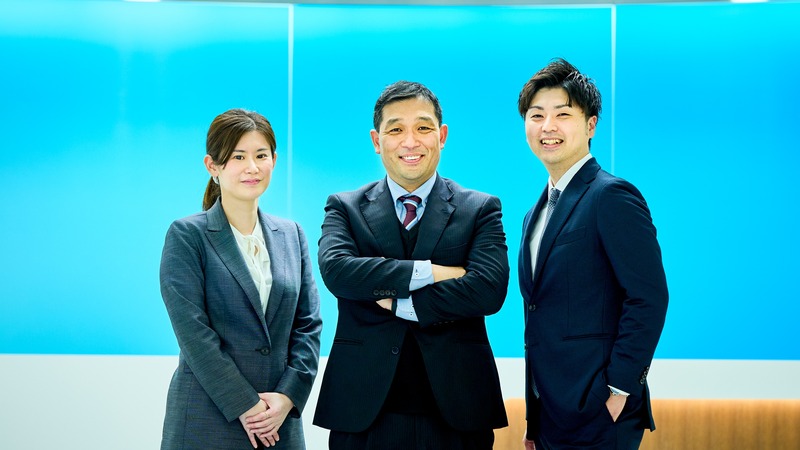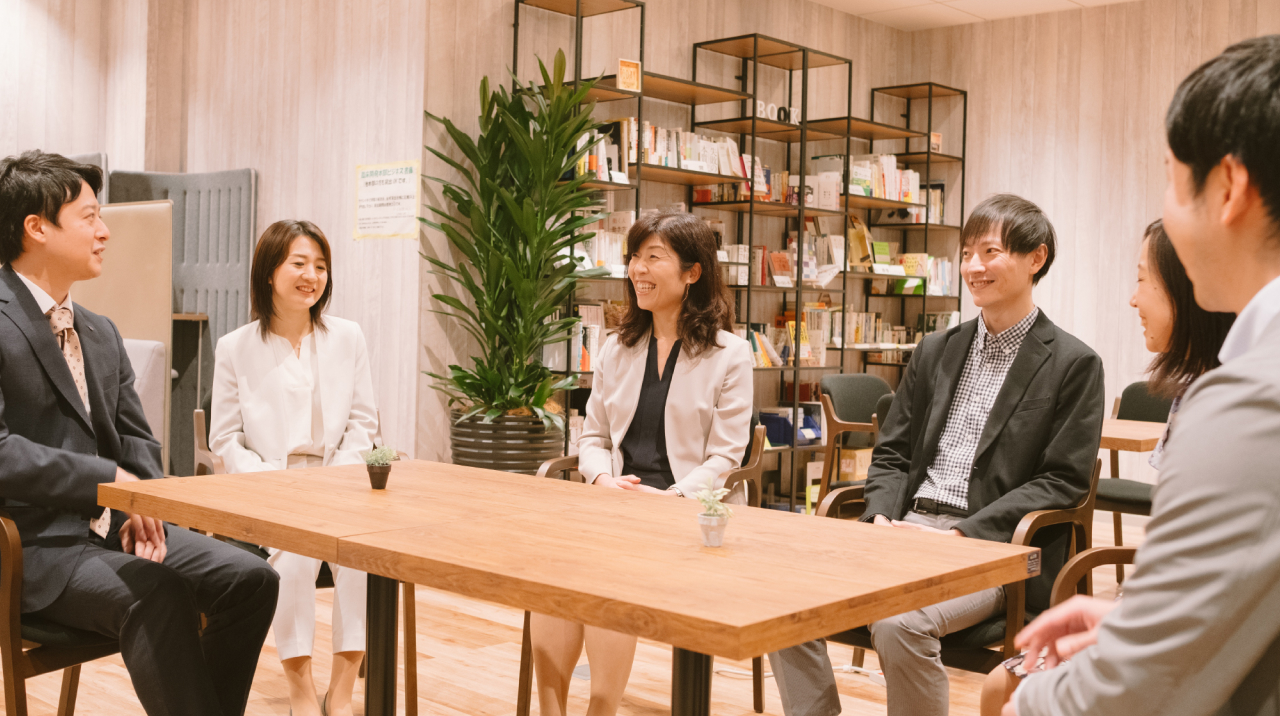Working with Patients to Create a Future in Which Every Person Can Choose the Optimal Form of Treatment
- Recruitment
- Sustainable Healthcare
- Corporate
- PHARMONY
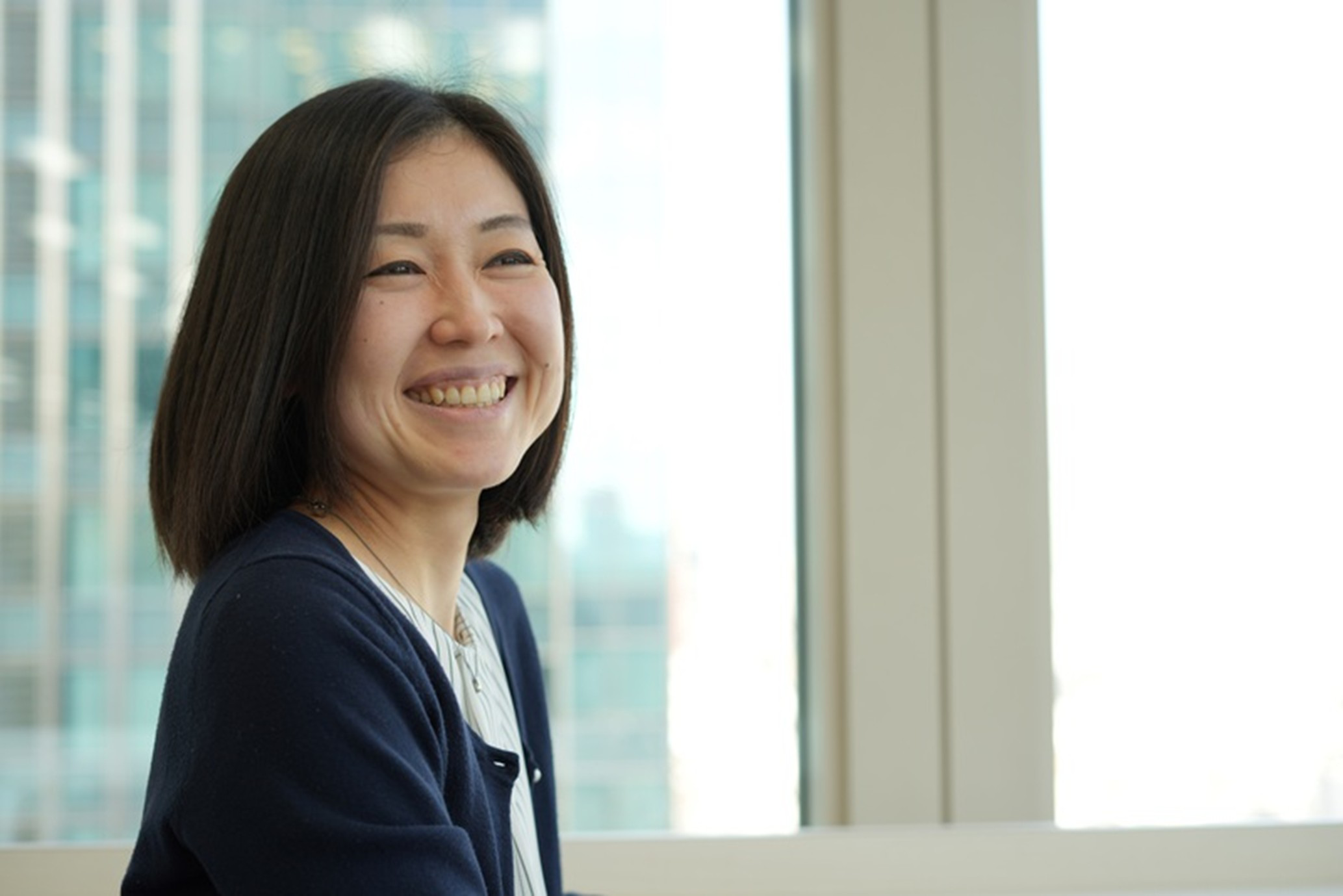
Patients are at the center of all Chugai Pharmaceutical’s corporate activities, and the company is in constant pursuit of value to benefit them. Takeuchi is leading a collaborative project with patient groups to achieve patient-centered, sophisticated, and sustainable healthcare. In this article, Takeuchi tells us more about her efforts to reform healthcare having positioned patients as solution partners.
(Interviewee: Takeuchi)
*Reproduced from Chugai Pharmaceutical’s official Talentbook page (https://www.talent-book.jp/chugai-pharm) Article details and employee positions are current as of October 2023
Examining the Future of Healthcare Through Dialogue Sessions. Aiming to Create Shared Value for Both Chugai Pharmaceutical and Society
In 2019, Chugai Pharmaceutical redefined its mission statement. In addition to setting forth its mission to “Dedicate ourselves to adding value by creating and delivering innovative products and services for the medical community and human health around the world” and clarifying its purpose, the company also defined its three core values: Patient Centric, Pioneering Spirit, and Integrity.
Takeuchi says, “At Chugai Pharmaceutical, our basic policy is to ‘Address social challenges through innovation centered on revolutionary pharmaceuticals and promote the development of the company and society.’ Our goal is to create shared value for both the company and society through the achievement of patient-centered, sophisticated, and sustainable healthcare.
The most important of our three core values is Patient Centric. We believe that the most important thing is patients’ health and happiness, and our aim is to create a healthcare system in which every patient can choose the optimal form of treatment.”
To achieve this aim, Chugai Pharmaceutical is promoting collaboration with patient groups that work and speak on behalf of patients. Within this initiative, the company has established three central pillars: the maximization of product value for patients, disease awareness to improve patients’ health literacy, and support and advocacy for patients’ participation in healthcare. Fundamental to these initiatives is thorough communication to promote mutual understanding with the patient groups.
As healthcare companies, pharmaceutical companies were previously not allowed to engage in promotion activities aimed at patients due to compliance issues, and there was therefore a certain barrier in the relationship between these companies and patients. Having redefined its core values to include Patient Centric in 2019, however, Chugai Pharmaceutical began to proactively engage in collaborative activities with patient groups, while ensuring thorough compliance in the process.
“A representative example of these initiatives are the dialogue sessions between the CEO and patient groups that have been held since 2020. In these sessions, the CEO speaks to patient groups about Chugai Pharmaceutical’s Patient Centric initiatives. Through these discussions, each side can share the challenges they have identified, and the aim is to link these findings to solutions to social challenges.
In the first set of dialogue sessions in 2020, the CEO spoke with representatives of cancer-related patients’ groups. As previously there were almost no opportunities for patient groups to speak with senior management from pharmaceutical companies, representatives of these groups have called the initiatives epoch-making events in Japan.
The following year, we had representatives of different patient groups participate in the sessions, and since then we have invited a wide range of stakeholders including medical professionals and academics. In 2023, following a request from the patient groups, we hosted a joint dialogue session with senior management from two other pharmaceutical companies. The sessions are evolving each year,” says Takeuchi.
Utilizing Patient Feedback in Drug Discovery. Broadening the Company’s Patient-centric Activities Through the PHARMONY Scheme

The basic cycle for these dialogue sessions sees the issues identified in one year revisited the following year with reports on how they have been addressed. While various challenges have been identified through these sessions, one topic of particular interest among patient groups has been the creation of opportunities for dialogue with drug discovery researchers.
Takeuchi explains, “Although to date we have incorporated patient feedback into processes including clinical development, approval, sales, and reviews, through these sessions we realized first hand the importance of incorporating patient feedback from a much earlier stage of the research process. In response, we hosted a dialogue session between our researchers and patient groups. This also led to the creation of a scheme to bring patient feedback into research that we have called PHARMONY.
The term brings together the first letters of “patients” and “pharma” with the word “harmony.” To create this scheme, we worked together on trial research projects to accumulate the relevant knowledge. Based on this information, we then created an activity guide for collaboration with patient groups. Our hope is to utilize patient insights from PHARMONY activities into our future drug discovery research.”
Takeuchi and her team began creating the PHARMONY scheme in 2022. At the start, however, the process involved lots of trial and error as there were very few examples in the industry of incorporating patient feedback into the early stages of research.
“Researchers have a strong sense of duty and are passionate about working on drug discovery for the sake of patients. On the other hand, most pharmaceutical R&D projects take lots of time, and many do not go as planned. Moreover, due to the nature of R&D, there is plenty of information that cannot be disclosed externally, and there were concerns in some circles that the conversations could end up with disappointed patients.
In response, we began by communicating to those involved that the aim was to exchange information to ensure mutual understanding. It was important for researchers to understand that patient groups didn’t necessarily want their feedback to be taken on board at all costs, and for patients to be able to listen to researchers speak frankly about the challenges of drug discovery,” says Takeuchi.
Exchanging opinions as part of an actual research project and listening to the feedback of patients first-hand allowed researchers to take away some valuable realizations.
“While researchers can collect information on diseases, medicines, and treatments from medical professionals and academic papers, for example, there is certain information that can only be gleaned from communicating with patients, such as subsequent complications post-op or daily challenges and requirements during the treatment period. Through this exchange of opinions, researchers say that they have collected a huge amount of information that can be applied to future drug discovery.
In terms of the format, previously we thought that sending patients questions and receiving general responses in advance would make the exchange of opinions on the day much more efficient.
However, the more we held meetings with these patient groups, the more we came to realize that there were many patients who would be distressed when recalling past treatment experiences when alone but much more at ease when with others.
Moreover, instead of just simply having participants express their opinions, we received suggestions on ways to improve the process such as by having participants write down their opinions on pieces of paper and sorting them out together. In this way, together we examined the best way forward. Working with patients to develop this platform provided an ideal opportunity for us to develop mutual understanding.
We will continue with these initiatives to share the relevant information in-house and to enhance understanding of the significance and value of exchanging information with patients.”
The PHARMONY scheme has grown to be used outside of the research division, with departments that previously did not have the opportunity to interact with patients engaging in collaborative activities with patient groups. For example, activity guides have been created for the pharmaceutical technology division’s collaboration with patient groups.
Moreover, aiming to establish the patient-centric approach among employees and to bring change to their mindsets and behavior, the PR & investigation department and the management planning department have teamed up to launch a new companywide project to promote dialogue between patients and employees.
Takeuchi says, “The aim is to encourage employees to think about how they can engage in patient-centric activities and generate action, and to have them think of patients as solution partners. We have termed the project PHARMONY ONE to represent the first step in our activities, a sense of togetherness, and co-creation.
Participation in PHARMONY ONE is voluntary to enable employees to take the initiative, and we have adopted a workshop format so that participants can exchange opinions on how to address the common issues facing patients.”
The first PHARMONY ONE session was held in September 2023. And plans are in place for its continued implementation.
“PHARMONY activities, including PHARMONY ONE, place the utmost value on ensuring that action does not stop after listening to patient feedback. Instead of ending these sessions by saying ‘thank you for your valuable input,’ we believe that we can proceed to the next step by feeding back the results of our initiatives and considerations into these sessions.
We have received some positive comments from these patient groups, too. Some have said how they really appreciate our honest sharing of results and that the information has enabled them to take the next step, while others have said the collaboration has been very worthwhile thanks to our patient-centric approach.
Employees, meanwhile, have said that PHARMONY activities have helped them to transform their mindsets. For example, while previously our researchers only really thought about the moment patients ingest the medicine and the measurement of their effects, they have come to realize that these are only single points in the overall process and that they must turn their attention to patients’ lives overall. This change in mindset has given the project real significance. In the future, I hope to further communicate this positive feedback both internally and externally,” says Takeuchi.
Hard Work Driven by Patient Feedback. Creating a Better Future Through Collaborative Activities
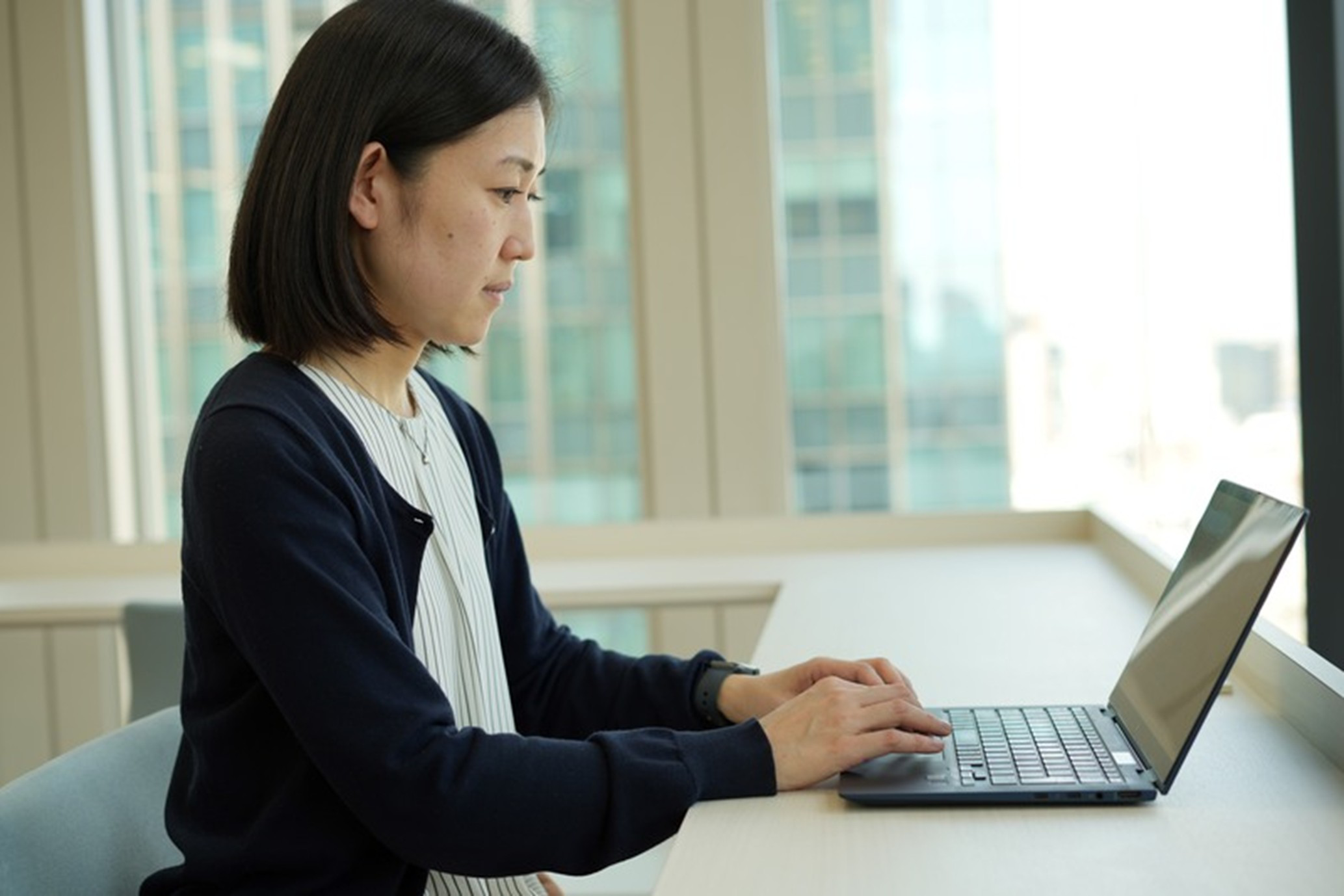
After joining Chugai Pharmaceutical in 2005, Takeuchi first worked as a medical representative covering medical institutions in the Tokyo area. She then had a stint in the marketing department before being seconded to the Chugai Academy for Advanced Oncology (today’s Foundation for Innovative Drug Discovery Science), which was where she first began communicating with patient groups.
She says, “In this role I was in charge of providing platforms for horizontal networking for representatives of various patient groups, and of hosting lectures and workshops led by experts we had invited in from outside the company. For cancer-related patient groups, we provided assistance and support from a different standpoint to pharmaceutical companies.
Although I struggled somewhat at the start as I had only ever interacted with medical professionals up until that point, I learned a huge amount in the six years I was there, such as patients’ viewpoints and the challenges they are facing.”
Takeuchi says that interacting with patient groups made her feel closer to patients themselves. It was around this time that she realized the potential for collaboration.
“In speaking with these patient groups, I realized how everyone just wanted the same thing. That is, to create a livable society and to contribute to the creation of drugs that can save as many lives as possible.
One representative told me how they thought that the efforts of patients and medical professionals alone would probably not be enough, and that it would be the overall involvement of people in positions like mine that would be important in the future.
No matter the challenges they face, patients’ groups work incredibly hard to do everything within their limits, and many of these groups’ members have a willingness to take the necessary action. I remember thinking that if individuals from different standpoints could effectively combine their strengths, there was a real possibility that we could transform society for the better.”
After returning from the foundation, in 2020 Takeuchi joined the public affairs group within the PR & investigation department. From her new standpoint as a pharmaceutical company employee, here she began promoting collaboration with patient groups using the experiences she gained on her secondment.
“Collaborating with patient groups requires a thorough understanding of the different challenges facing different diseases and areas, as well as of the scale, objective, and activities of the patient groups in these fields.
Moreover, to avoid the company’s focus on certain groups and the overlapping of similar projects, the company’s current system, which provides a single internal contact point for patient groups to ensure the information is managed in a consolidated manner, is perfect.”
Seeing patients as solution partners, Takeuchi has made sure to value the following points as she leads collaborative projects with patient groups.
“There is no point in hosting projects that are only beneficial for the company. Moreover, it is not as simple as just taking all patients’ feedback on board. We therefore work hard to ensure that the projects are beneficial for both parties. We want the patient groups to be glad to have worked with us, and for our internal departments to be pleased to have taken part.
We have developed Patient Communication Specialists to help us in this regard. These individuals are responsible for approaching both patient groups and internal departments and function as focal points from which to find solutions. While working closely with relevant departments and patient groups with a clear objective, we are working to maximize the significance and value of the information gained for both parties,” says Takeuchi.
As one of the earliest companies in the domestic pharmaceutical industry to begin collaborating with patient groups, there were many and various hurdles along the way. Driving these efforts forward, however, was feedback from the patient groups themselves.
“Representatives of patient groups who have participated in these dialogue sessions have been full of praise for how our efforts are ongoing as opposed to ending after only one session. I was really happy to see that our activities to date had been well-received.
Elsewhere, employees who have taken part in information exchange sessions have said that listening to patients’ feedback has improved their motivation to conduct research and that even a year later they think of the patients when examining the optimal medicine to treat them. It is comments like these that have given me the energy to get to where we are today.
Moreover, we took top spot overall in an external patient group survey hosted by PatientView between November 2022 and February 2023. This ranking has proved that our activities have not been in vain and has given us the motivation to keep developing.
Through the continuation of these activities, we will aim to quickly make the use of patient feedback in domestic drug discovery research a matter of course, and to create a society in which multiple stakeholders, including patients, work together to address social challenges,” says Takeuchi.
Patient-centric Healthcare: Ongoing Efforts to Become the Healthcare Industry’s Top Innovator
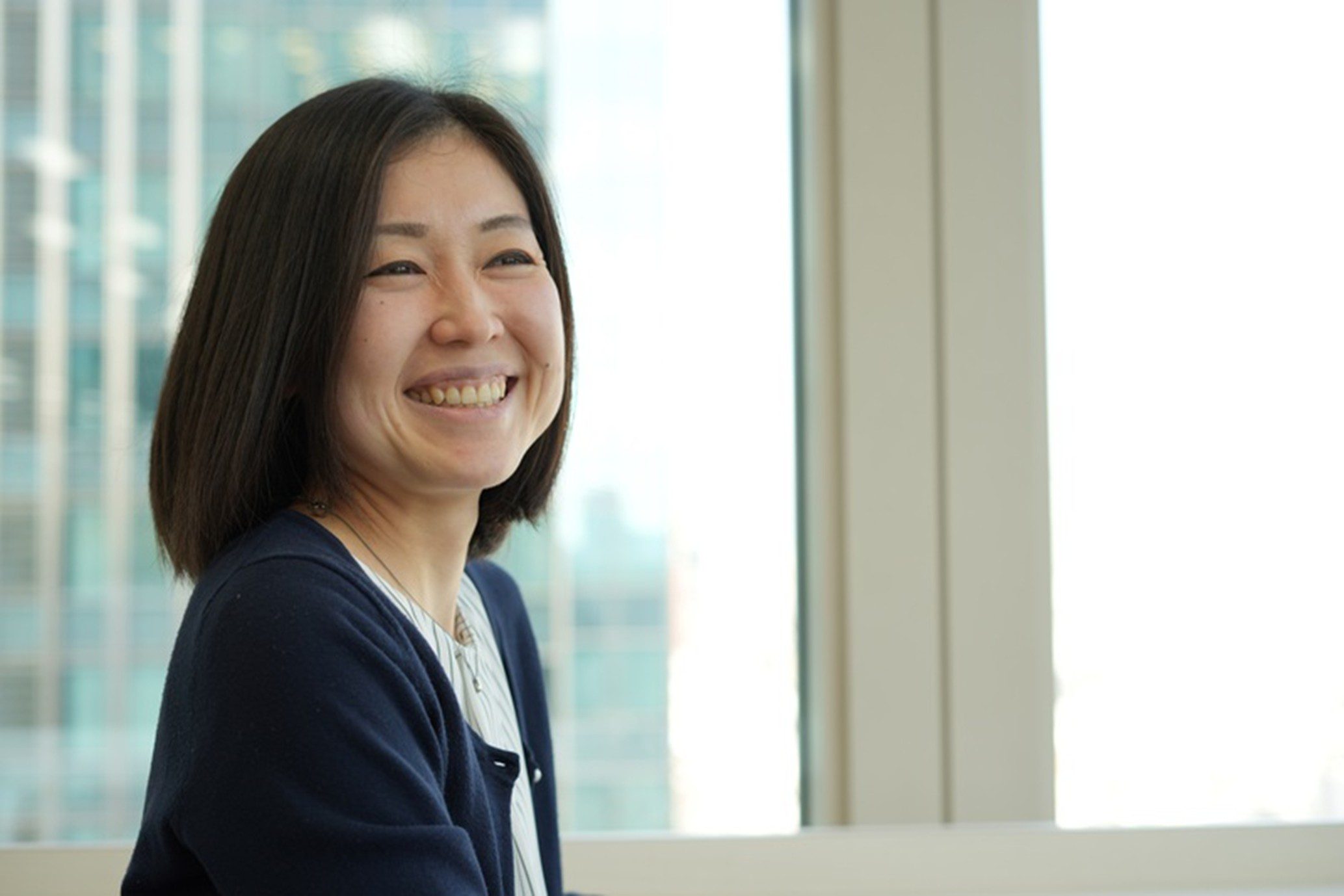
Chugai Pharmaceutical’s patient-centric healthcare vision aims to promote patients’ voluntary participation in healthcare and to give them the ability to choose the optimal form of treatment. When we ask about her aspirations, Takeuchi says:
“There are still many challenges if we are to achieve this vision. To address these challenges, it is essential that we work with various stakeholders in addition to patient groups, such as other companies, medical professionals, and governmental organizations. One multi-stakeholder initiative that is a good example of this is the Tsukuru-kai*.
That said, compared to activities in the West, these initiatives in Japan are very much just beginning. We will continue to do everything we can to become the top innovator in the healthcare industry.”
Takeuchi is exploring an untrodden path. Asked about her future, she says:
“Now I think it is important to pioneer a new path in the creation of solutions to social challenges through collaboration between multiple stakeholders, including patient groups. After completing each task in front of me, I am hopeful that a career suited to me will gradually take shape.”
Takeuchi’s efforts to achieve patient-centric healthcare and to create a society in which patients can choose the optimal form of treatment will continue.
*A group that aims to create a society in which it is easier to access clinical trials. The group was established to enable collaboration between patient groups, researchers, and academics to improve access to clinical trials across different diseases.

